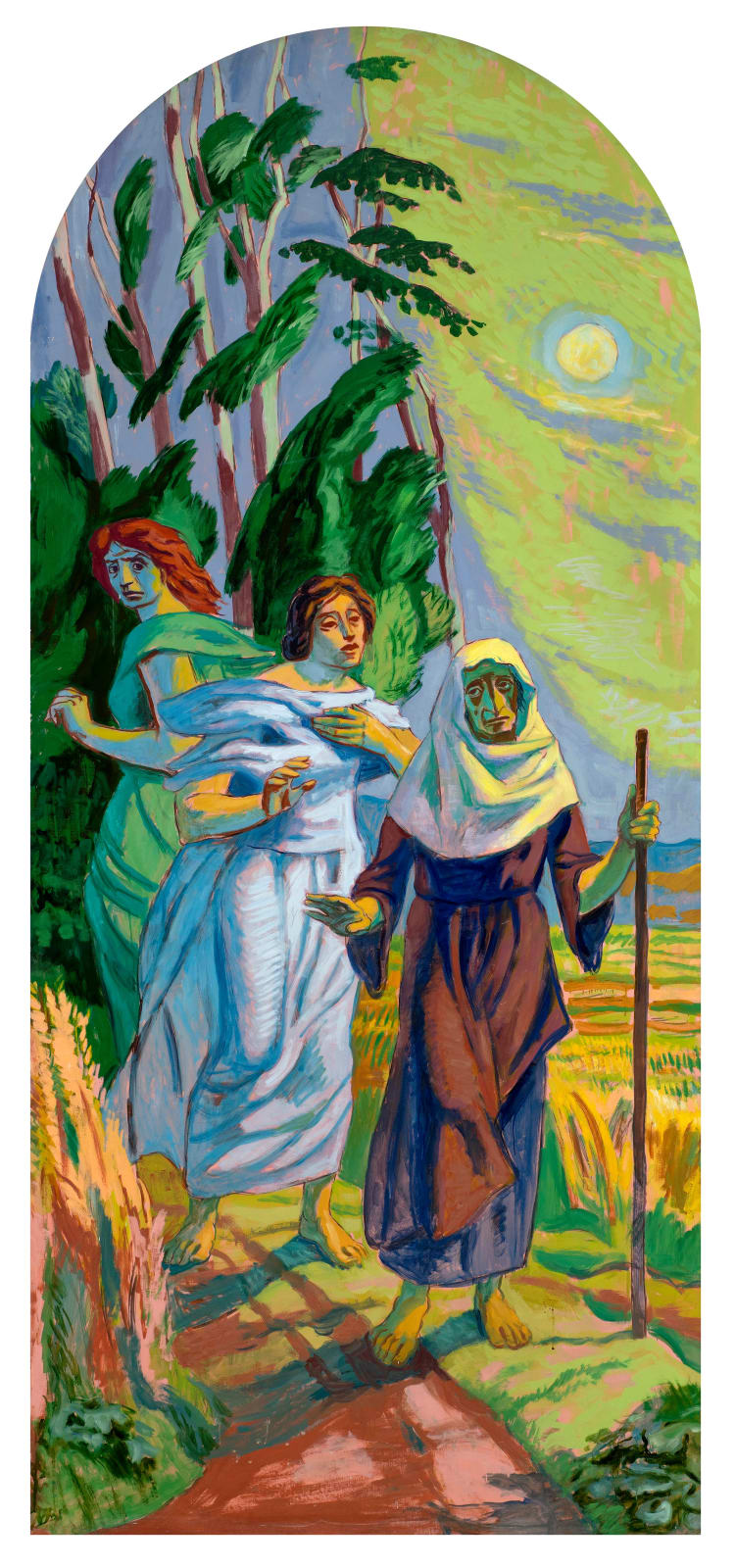Hans Feibusch 1898-1998
This work is one of a series of five oil paintings on canvas on Old Testament subjects that together explore issues of faith, sacrifice, courage, love, and redemption, originally commissioned directly from the artist by Czechoslovakian-born Rabbi Hugo Gryn, a Holocaust survivor, for the Stern Hall of the West London Synagogue in 1973. The scene is from the biblical Book of Ruth in which Ruth and Orpah, two women of Moab, had married the two sons of Elimelech and Naomi, Judeans who had settled in Moab to escape a famine in Judah. After the death of Elimelech, and then the husbands of both younger women, Naomi plans to return to her native Bethlehem and urges her daughters-in-law to return to their families and re-marry. Orpah reluctantly departs but Ruth begs to stay with Naomi and share her fate. They travel to Bethlehem and Ruth looks after Naomi by collecting the gleanings of the field belonging to a wealthy landowner named Boaz, whom she eventually marries, becoming great-grandmother to King David.
In this painting, set during the day when the sun is high, Feibusch shows the scene of Orpah's leave-taking and Naomi imploring Ruth to be allowed to join her as she departs. In the corresponding watercolour, he chooses to show the two women departing by moonlight.
In Judaism, the Book of Ruth is part of the biblical canon called Ketuvim, or Writings. Ruth's story is celebrated during the Jewish festival of Shavuot, the Feast of Weeks, 50 days after Passover.
All of Feibusch’s works on religious subjects employ a fresh and vibrant palette. In his Times obituary (21 July 1998), it was noted how Feibusch’s religious works exhibited ‘brilliant colour and a composition which is generally suave and classical, often lyrical: he was a man who valued warmth and passions in religion, knew how to project joy and sorrow in his painting, sorrow for European conflict being for many decades a keenly felt emotion’.


